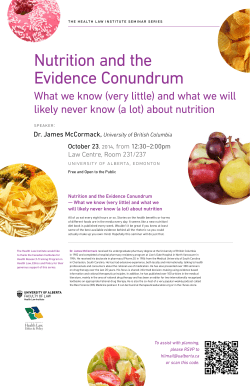
Studies of school garden programs have shown many benefits
Research on the Benefits of Youth Garden Programs Over the past three decades, obesity rates have skyrocketed in the United States and now nearly a third of all adults are obese (Center for Disease Control 2011). Unfortunately, the statistics for children are following the same trend. The obesity rate among children has more than tripled since 1980 and now stands at 17 percent (Ogden et al. 2010). There are many factors contributing to this rise in obesity among adults and children, including sedentary lifestyles and poor eating habits (U.S. Department of Health and Human Services 2005). Research shows that one solution to this problem could be instituting school gardening programs. Studies of school garden programs have shown many benefits, including (1) increased openness to, preference for, and intake of fruits and vegetables, (2) increased academic performance and attitudes toward learning, (3) improved behavior at home and at school, and (4) improved environmental appreciation and attitudes. 1. Increased openness to, preference for, and intake of fruits and vegetables Robinson-O’Brien et al (2009) found that “exposure to garden-based nutrition education [is] associated with increased fruit and vegetable intake.” p278 After a combined nutrition and gardening program among 6th graders, participants ate an average of 2.5 more servings of fruits and vegetables—more than double what they ate prior to the program (McAleese and Rankin 2007). Pre and post surveys of the Delicious and Nutritious Gardening program participants showed a significant increase in their preference for vegetables (Heim et al 2009). Fourth graders who went through a gardening-nutrition program showed greater preferences for fresh vegetables and fruits than before the program, and were more willing to try new fruits and vegetables than fourth graders who only had the nutrition component (Morris 2002). Students who received garden and nutrition education were more likely to choose vegetables in their school cafeteria meal and had a higher preference for vegetables than both students in the control group and students who only had nutrition education (Parmer et al 2009). Youth Farm Market Project participants were more open to trying food from other cultures and more willing to try and eat vegetables (Lautenschlager & Smith 2007). 2. Increased academic performance and attitudes toward learning Science achievement of students who participated in a hands-on (i.e., experiential) gardening program was higher than that of students who only engaged in classroom curriculum (Klemmer et al. 2005). Garden-based learning associated with increased scores in science achievement tests in a controlled study (Smith and Motsenbocke 2005). Participants in a school garden program in California experienced significant gains in overall GPA in math and science, and improvement on a standardized psychosocial questionnaire. Teachers stated that gardening programs led to more conducive learning environments (Murphy 2003). Environment-based education, of which school gardens were a part, increased attention and enthusiasm for learning (Lieberman and Hoody 1998). 1 3. Improved behavior at home and at school Alexander and Hendren (1998) found that a school garden program improved self-esteem, a sense of ownership and responsibility, and family relationships among participants. Having gardens at school can help to create an environment that supports healthy eating habits and students who are more connected to the garden tend to be more positively bonded to their school. In turn, students who are more connected to school “show lower levels of emotional distress, risk behavior, and aggression” (most likely because these students are more likely to develop the same prosocial values held by the school and their teachers) (Ozer 2007). 4. Improved environmental appreciation and attitudes Lautenschlager & Smith (2007) found that participants of the Youth Farm Market Project had a greater appreciation for the environment than non-participants. Skelly & Bradley (2007) showed that after completing a garden program, the environmental attitudes of participants improved and were higher than non-participants. Bibliography Alexander, J. & D. Hendren. (1998). Bexar County Master Gardener Classroom Garden Research Project: Final Report. San Antonio, Texas Center for Disease Control. U.S. Obesity Trends. http://www.cdc.gov/obesity/data/trends.html#National. Retrieved on 25 August 2011. Heim, S.; Stang, J.; & Ireland, M. A Garden Pilot Project Enhances Fruit and Vegetable Consumption among Children. Journal of the American Dietetic Association. Vol 109. Issue 7. July, 2009. p1220-1226 Klemmer, C.D., T.M. Waliczek, and J.M. Zajicek. 2005. Growing Minds: The effect of a school gardening program on the science achievement of elementary students. HortTechnology, 15 (3) 448-452. Lautenschlager, L. & Smith, C. Beliefs, knowledge, and values held by inner-city youth about gardening, nutrition, and cooking. Agriculture and Human Values. Vol 24. 2007. p245-258 Lieberman, G.A. and L. Hoody. Closing the achievement gap: using the environment as an integrating context for learning. Sacramento, CA: CA State Education and Environment Roundtable, 1998. McAleese, Jessica D. and Linda L. Rankin. Garden-Based Nutrition Education Affects Fruit and Vegetable Consumption in Sixth-Grade Adolescents. Journal of the American Dietetic Association, Volume 107, Issue 4, April 2007, 662-665 Morris, Jennifer et al. 2002. Garden-enhanced nutrition curriculum improves fourth-grade school children's knowledge of nutrition and preferences for some vegetables. Journal of the American Dietetic Association. Research and Professional Briefs. www.adajournal.org Morris, Jennifer & M. Briggs, S. Zidenberg-Cherr. 2002. Development and evaluation of a garden-enhanced nutrition education curriculum for elementary school children. Journal of Child Nutrition & Management. Issue 2, Fall 2002 Murphy, Michael and Erin Schweers. Evaluation of a food systems-based approach to fostering ecological literacy. Final Report to Center for Ecoliteracy, 2003. Ogden, Cynthia et. al. Prevalence of high body mass index in US Children and Adolescents, 2007-2008. Journal of the American Medical Association. 303 (3) 242-249. Ozer, E. The Effects of School Gardens on Students and Schools: Conceptualization and Considerations for Maximizing Healthy Development. Health Education and Behavior. Vol 34. Number 6. December 2007. 846863. Parmer, S.; Salisbury-Glennon, J.; Shannon, D.; & Struempler, B. School Gardens: An Experiential Learning Approach for a Nutrition Education Program to Increase Fruit and Vegetable Knowledge, Preference, and Consumption among Second-grade Students. Journal of Nutrition Education and Behavior. Vol 41. Number 3. 2009. 212-217. Robinson-O’Brien, R.; Story, M.; & Heim, S. Impact of Garden-Based Youth Nutrition Intervention Programs: A Review. Journal of the American Dietetic Association. Vol. 109. Issue 2. February 2009. p273-280 Skelly, S. The effect of project GREEN, and interdisciplinary garden program, on the environmental attitudes of students. HortTechnology. Vol 8. Issue 4. Oct-Dec 1998. 579-583. Smith, Leanna L. and Carl Motsenbocke. 2005. Impact of hands-on science through school gardening in Louisiana Public Elementary Schools. HortTechnology, 15 (3) 439-443. United States Department of Health and Human Services. US Surgeon General’s Call to Action to Prevent and Decrease Overweight and Obesity. Overweight in Children and Adolescents. 2005. http://www.surgeongeneral.gov/topics/obesity/calltoaction/fact_adolescents.htm 2
© Copyright 2025









